The bathroom tends to be one of the most common areas in the house for mold to grow and flourish. Mold loves warm, damp environments. So, the bathroom is an ideal setting for growth. Although there are things you can do to prevent the fungus from growing in your bathroom, they won’t do much good if there’s already an infestation. Yet, there are effective ways to rid your bathroom of mold before the problem spreads further. Here, we’ll cover the best methods for removing mold from your bathroom ceiling, walls, and tile.
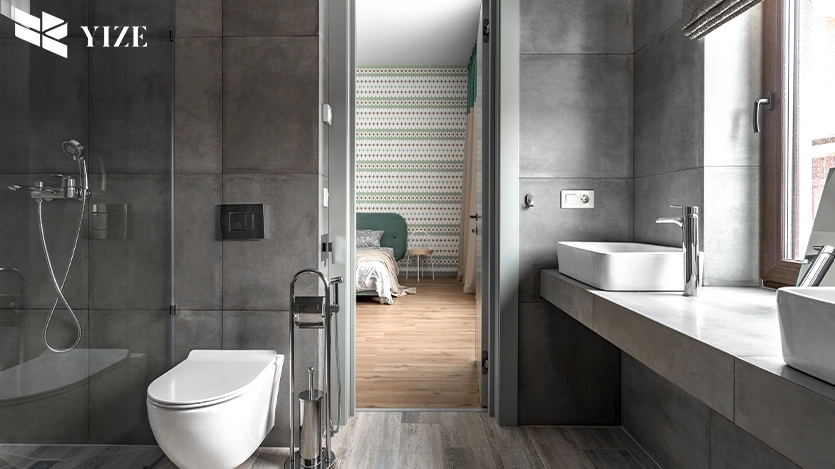
Effective Products for Removing Bathroom Mold
Before we dig into the methods for removing mold, we’ll cover the most effective products. When choosing a mold-removal agent, it’s best to choose one. It does the job without harming the surface you’re treating. There are several excellent choices when it comes to cleaning bathroom mold. If you’re dealing with a mild mold problem, a blend of soap and water may work as an effective cleaner. Yet, listed below are a few alternatives that work well for larger infestations.
White Vinegar
One common product used for removing mold in the bathroom is distilled white vinegar. Because of the acetic acid it contains, white vinegar works well to kill mold spores. You should always use vinegar that contains at least five percent acetic acid. Diluting it isn’t necessary.
Bleach Solution
First off, it’s important to note that it’s not advisable to use a bleach solution on your bathroom walls or ceiling. It also should only be used in an environment with plenty of ventilation; otherwise, it can be dangerous to breathe. That said, bleach works for removing mold around the bathtub, toilet, and shower walls. If you decide to remove the mold using a bleach solution, make sure to open a window or turn the bathroom exhaust fan on.
Borax
If you prefer not to use bleach or white vinegar, you could use a borax solution to remove mold from your bathroom. To do so, mix one cup of the powder into a gallon of warm water. The best way to use the solution will be to pour it into a spray bottle.
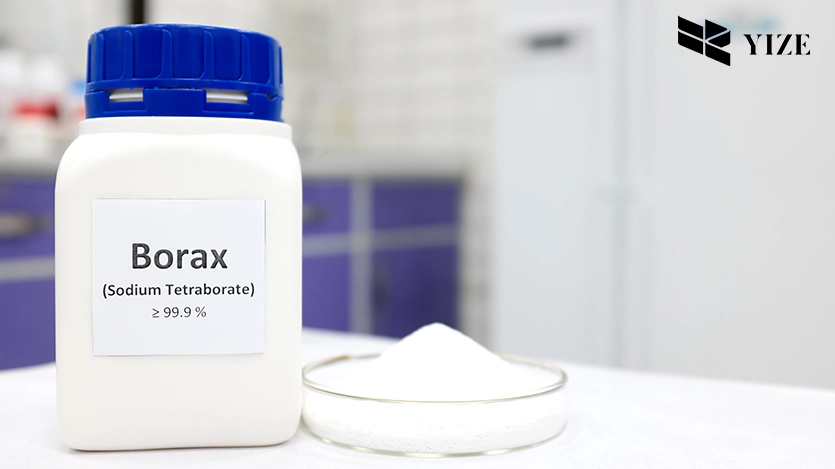
Equipment Needed for Removing Bathroom Mold
Before you begin removing mold from your bathroom, you’ll need to gather a few important items. You should always wear gloves, protective eyewear, and a face mask when working with mold. Breathing too many mold spores can be detrimental to your health. And letting the fungus come into contact with your skin isn’t wise, either. In addition to your protective gear, you’ll need a few other tools for the actual cleaning. You should have a spray bottle for the cleaning solution and several clean rags. You should also have a scrub brush with soft bristles. Once you’ve gathered these items and a mold-killing product, you’ll be ready to rid your bathroom of the fungus.
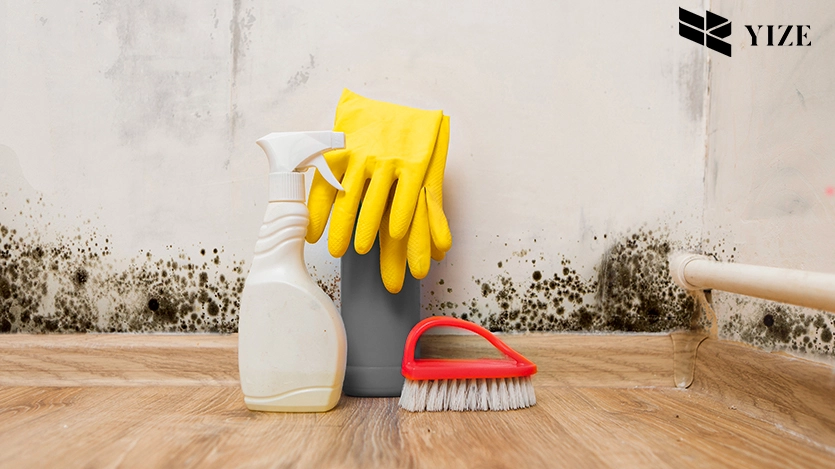
Removing Mold From the Bathroom Ceiling
The bathroom ceiling is a very common location for mold growth. And because it can take a while to notice mold up there, it’s often allowed to flourish for a prolonged period. But if you approach the task properly, there’s no reason you can’t clean the mold from your bathroom ceiling. For ceilings, the best product to use is distilled white vinegar.
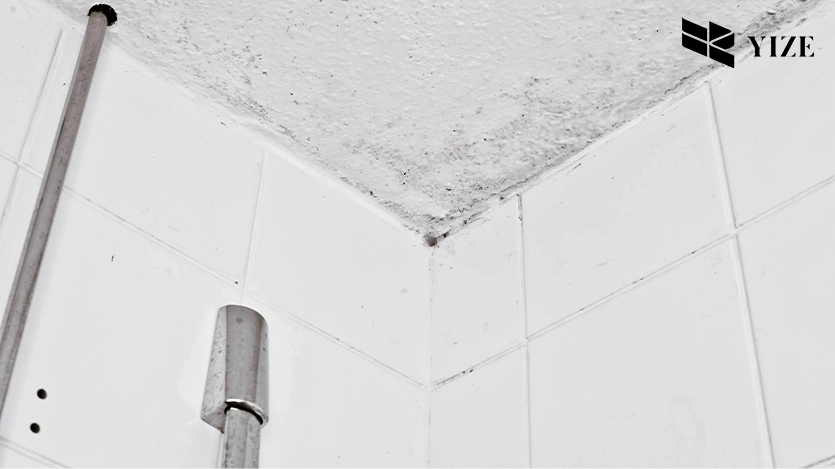
Step 1: Pour the distilled white vinegar into a spray bottle.
Step 2: Turn on the bathroom exhaust fan and close the door. This will ventilate the room and seal the area off from the rest of your home.
Step 3: Generously spray the white vinegar all over the parts of the ceiling affected by mold. You don’t need to drench the ceiling, but you should apply a thorough coat of the liquid.
Step 4: Using a brush with soft bristles, scrub the affected areas. Make sure you’re wearing your gloves, face mask, and eye protection for this step! As you scrub, the mold should disappear from the ceiling. Remember to periodically rinse your brush while you’re scrubbing away the mold.
Step 5: Once you’ve removed all the mold from the ceiling, apply warm water to a clean rag. Wipe the ceiling down to clean off the vinegar and any remaining mold spores.Step 6: Use another clean rag to dry the ceiling completely. If you leave it damp, it will increase the likelihood of the mold problem returning.
Possible Causes for Mold on the Bathroom Ceiling
Most of the time, mold grows on the bathroom ceiling due to a lack of ventilation. If you and your family take hot showers, the bathroom can become like a jungle. So, if there isn’t proper ventilation, it’s a perfect environment for mold to grow. To remedy this situation, you may want to upgrade your bathroom exhaust fan. You could also leave the fan running more often or keep the bathroom window open. Another possible cause could be a hidden leak in your bathroom ceiling. If you suspect that to be the case, contact local leak detection professionals. They will be able to find the source of the water and find an effective solution.
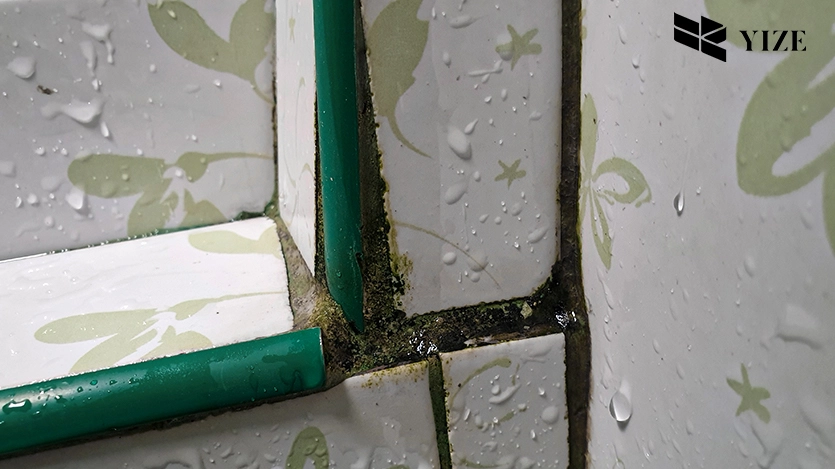
Removing Mold From the Bathroom Walls
If you catch the problem early, removing mold from your bathroom walls should be simple. If the fungus is only on the surface of the wall, the method is very similar to cleaning the ceiling. Once again, distilled white vinegar is a great choice for the job. You could also use a borax solution if that’s your preference. Before you start, equip yourself with the necessary protective equipment. Then, follow the steps below.
Step 1: Pour the white vinegar or borax solution into a spray bottle.
Step 2: As before, ensure that the bathroom is ventilated and close the door to seal off the room.
Step 3: Spray the moldy sections of the wall and wallpaper.
Step 4: Immediately begin scrubbing the wall with your soft-bristled brush. Scrub vigorously and remember to rinse the brush often as you go.
Step 5: Once the surface layer of mold is gone, apply another thin layer of white vinegar or borax solution.
Step 6: Let the mold-killing solution sit for roughly 10 minutes.
Step 7: Wipe down the wall with a clean towel. Do not rinse the area with water.Step 8: Allow the solution to dry overnight. This should kill off any remaining mold spores.
What if the Mold Is in the Drywall?
If you allow the mold to linger on bathroom walls for months or years, it can spread into the drywall. When that happens, the issue becomes much more serious. In most cases, the affected section of drywall will need to be replaced. Otherwise, there will be no effective way to remove mold infestation. If any part of the wall feels soft when you put pressure on it, that’s a sign that the drywall is beyond salvaging. In these situations, you should hire local mold remediation professionals for the job. They’ll have the experience and equipment needed to get rid of the most serious mold problems.
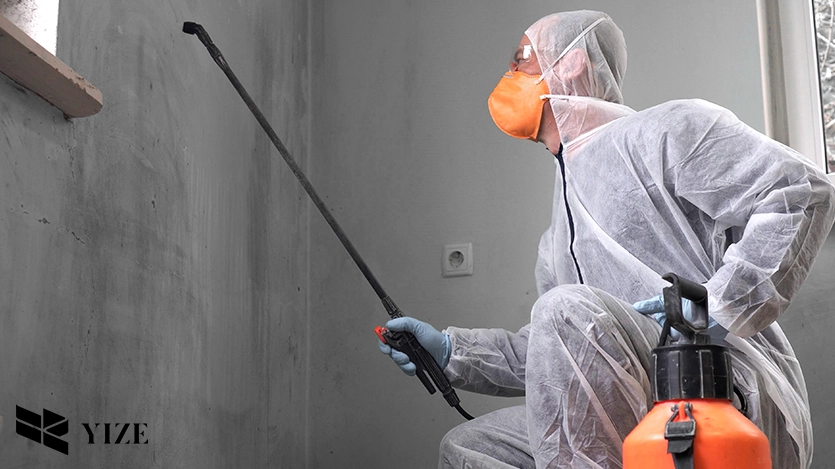
Removing Mold From Bathroom Tiles
Tiles are very common in household bathrooms, and they can be susceptible to mold growth. The good news is that with tiles, the fungus can only spread across the surface. So, removing it shouldn’t be too difficult. You can go with white vinegar, a borax solution, or diluted bleach. You will also want to put on your gloves, face mask, and eye protection.
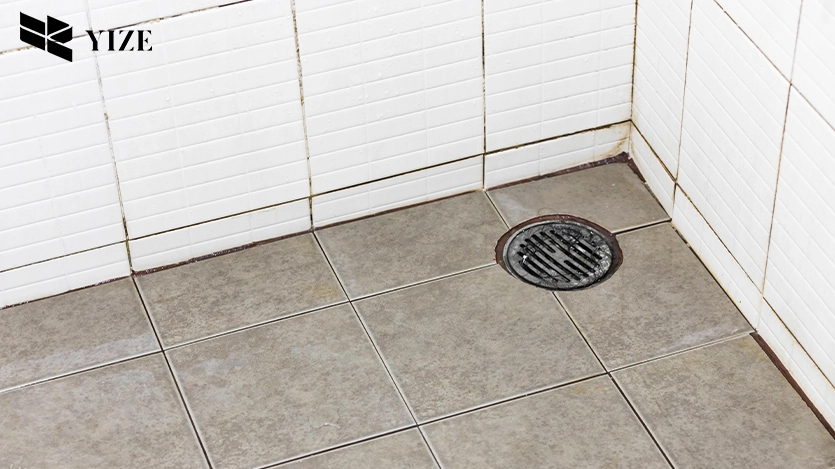
Step 1: Pour the solution you’re using into a spray bottle. If you use bleach, one part bleach to 10 parts water should be strong enough for the job.
Step 2: Turn on the exhaust fan and close the door to the bathroom.
Step 3: Apply a very generous amount of your mold-killing solution to the moldy tiles. Make sure to cover all the affected areas with liquid.
Step 4: Let the solution sit for a few minutes.
Step 5: Start scrubbing the mold from the tiles using a soft-bristled brush. You may need to apply pressure, but you should be able to scrub all the fungus away.
Step 6: Using a damp rag, thoroughly rinse the tiles.Step 7: Use another clean rag to dry the tiles. Make sure it’s completely dry to prevent mold from coming back.
How to Prevent Bathroom Mold From Returning
Once you’ve removed all the mold from your bathroom, you may think the battle is over. But if you want to avoid dealing with similar problems again, there is still more to do. By taking certain measures, you can reduce the chances of future mold infestations.
Keep the Bathroom Ventilated
The most effective way to prevent bathroom mold is to keep the room ventilated. This will prevent the bathroom from becoming too damp. Make sure that the exhaust fan in your bathroom is working properly. And every time you take a shower or bath, allow the fan to run for 20 or 30 minutes afterward. If there’s a window in the bathroom, leaving it cracked more often could help as well.
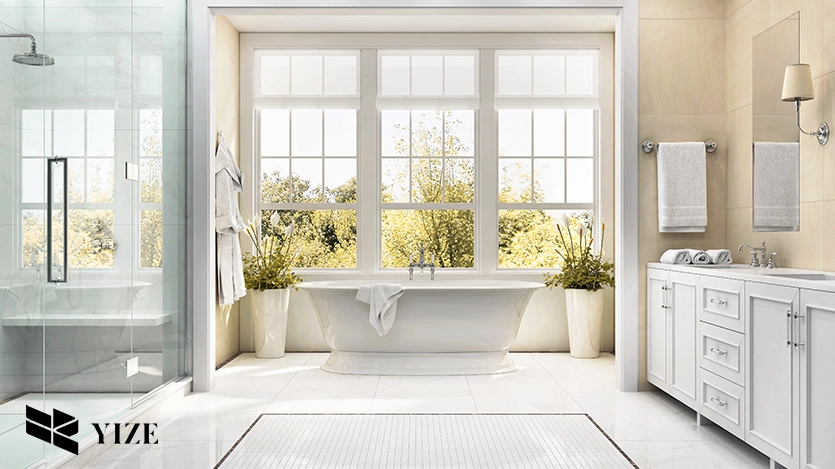
Address Plumbing Leaks Promptly
Plumbing leaks are a very common cause of bathroom mold growth. The longer you allow these water leaks to linger, the worse the mold infestations tend to get. In some cases, the mold could be growing behind the walls for months without you realizing it. Make sure to watch for signs of household plumbing leaks. These include increasing water bills, poor water pressure, and moisture stains on walls and ceilings. You should also have your plumbing system inspected by professionals periodically.
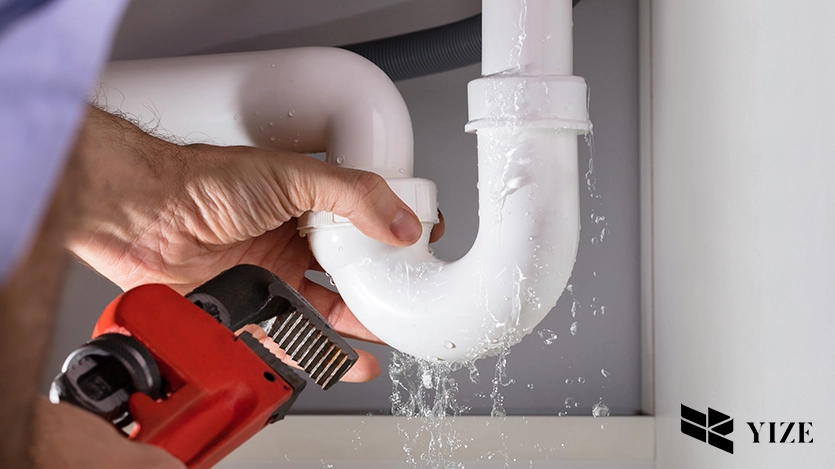
Use Mold-Resistant Paint
When you paint your bathroom, using mold-resistant paint is always a wise choice. This special paint will make it much harder for mold to grow and spread in your bathroom.
Limit Shower Length
Taking hour-long showers can be nice, but it can also increase the chances of mold growth in your bathroom. A long shower now and then is fine, but you should avoid making it a habit. By keeping them short, you can prevent the bathroom from turning into a mold breeding ground.
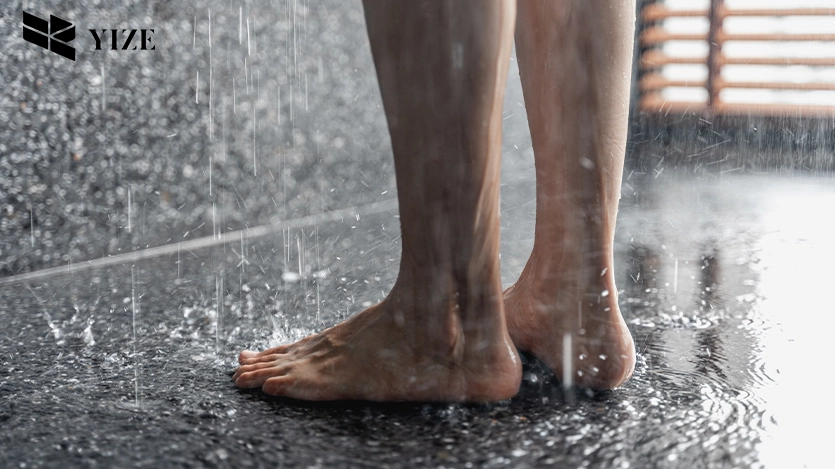
The Bottom Line
Nobody likes dealing with mold in their home. But finding the fungus in your bathroom doesn’t need to be a disaster. As long as the infestation is in its early stages, you should have no problem removing it yourself. When you’re dealing with a huge mold problem, though, it’s best to let the professionals handle it. They will know how to remove the fungus safely. Plus, they can help you ensure that your household is free of mold growth in the future.
